
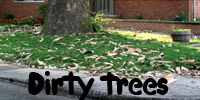
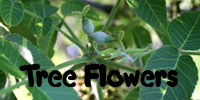
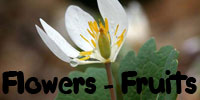
|
Flowers and Fruits, part 3: Fusion and Symmetry
A flower's corolla is made up
of a characteristic number of petals, most often 3, 4 or 5. These may
be separate from one another (choripetalous, also called polypetalous),
or fused into a single compound unit (sympetalous). Here are some
examples, starting with a choripetalous (polypetalous) flower.
Below, wood poppy. This is a spring wildflower of rich woods.
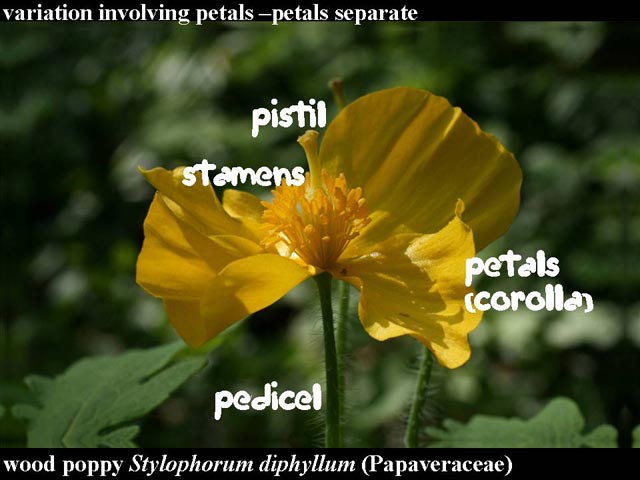
Wood poppy flowers have separate petals, i.e., they are choripetalous (syn: polypetalous).
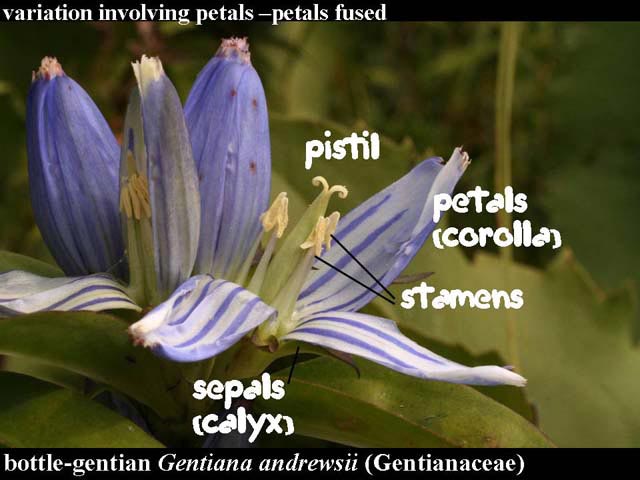
Gentian flowers are sympetalous, having 5 fused petals.
Whether separate or fused, all of a flower's petals may
be identical in size and shape, resulting in a flower with radial
symmetry (actinomorphic). Contrariwise, a more intricate, bilateral
symmetry (zygomorphic) shape may induce pollinators to orient
themselves in a particular manner that maximizes the likelihood that
pollen will be deposited and/or removed from the flower. Here are some
examples, starting with radial symmetry.
Below, bouncing bet. This is an introduced weed in the pink (carnation) family. Also called "soapwort," its crushed leaves mixed with water can produce a cleansing lather. Bouncing bet has actinomorphic flowers.
Bouncing bet has actinomorphic flowers.
Below, yellow star-grass. This is a spring-blooming prairie wildflower.
Like most monocots, it has linear leaves and flower parts that
are in threes or multiples of three. The flowers are actinomorphic
(radial symmetry).
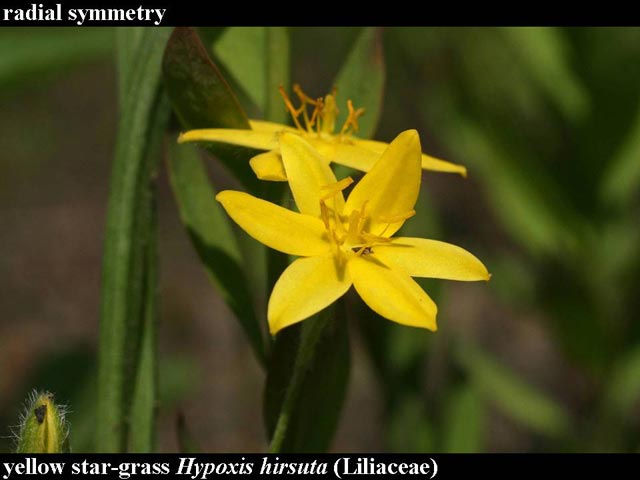
Yellow star-grass has radially symmetric (actinomorphic) flowers.
Below, hedge bindweed. This extremely common native vine is related to the morning-glories (Convolvulus species). The corolla is sympetalous and also has actinomophic symmetry.
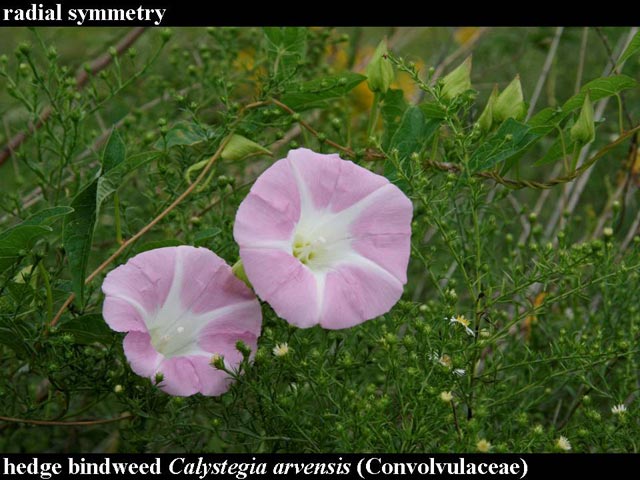
Hedge bindweed flowers are actinomorphic.
Below, striped creamy violet. Over the
course of a season, many violets produce two types of flowers: (1)
early there are these showy ones that attract pollinators to promote
cross-pollination, and (2) during the summer, inconspicuous ones that
never actually open, as they self-pollinate in the bud. The showy
flowers are strongly zygomorphic (bilaterally symmetric). Note that the
lowermost petal is prolonged backwards into a nectar-filled sac-like
"spur" that encourages a bee to poke her tongue deep into the bloom.
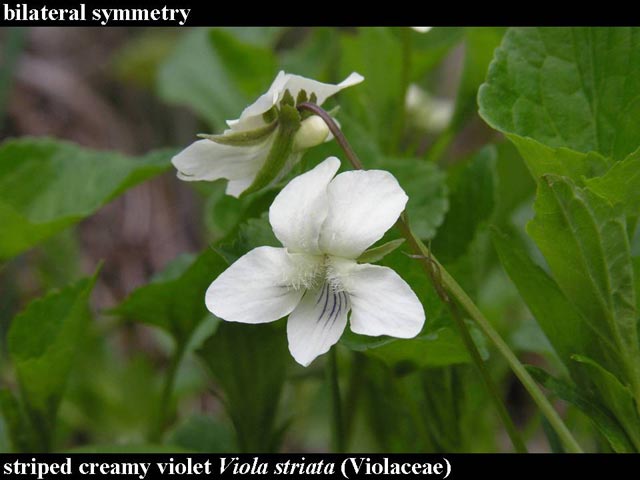
Stiped creamy violet has bilaterally symmetric (zygomorphic) flowers.
As with people and a great many other animals, the
expression of plant sexuality isn't always very clear-cut. (Forests are
sometimes clear-cut though.) A plant might mostly
produceunisexual flowers. Some species of meadow-rue, for example are
"polygamo-dioecious": bearing on one plant flowers partly perfect and
partly pistillate, and on another plant flowers that are partly perfect
and partly staminate.
Below, cardinal-flower. This is one of our very few red
wildflowers, a cue that entices hummingbirds. (The other red ones are
columbine (Aquilegia canadensis, family Ranunculaceae), royal catchfly and fire-pink (Silene regia and S. virginica, respectively, family Caryophyllaceae).
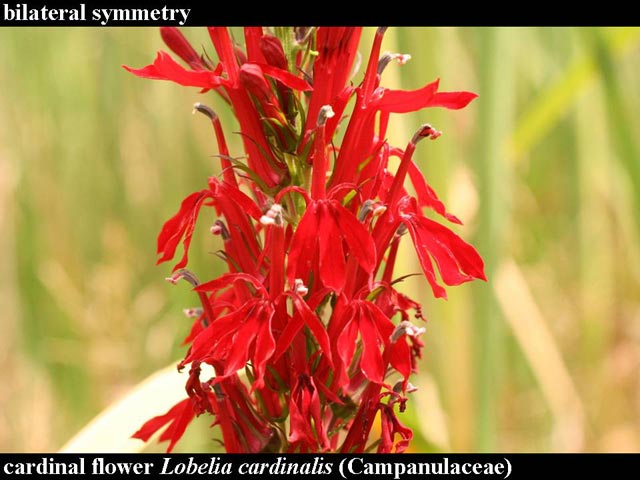
Cardinal-flowers are strongly zygomorphic.
Below, purple fringeless orchid. Mainly because of their diversity in
the tropics (where many live as epiphytes perched on trees),
the orchid family is a huge one. Here in the temperate zone, orchids
are a minor component of the flora. They exhibit a number of exquisite
floral modifications, the best of which is a feature shared with
milkweeds: the pollen grains are adherent in waxy
masses transferred as a unit rather than as individual grains. The
flowers are strongly zygomorphic.
Purple fringeless orchid has strongly zygomorphic flowers.
Back: Flowers&Fruits Menu
Next: Pollination
|

